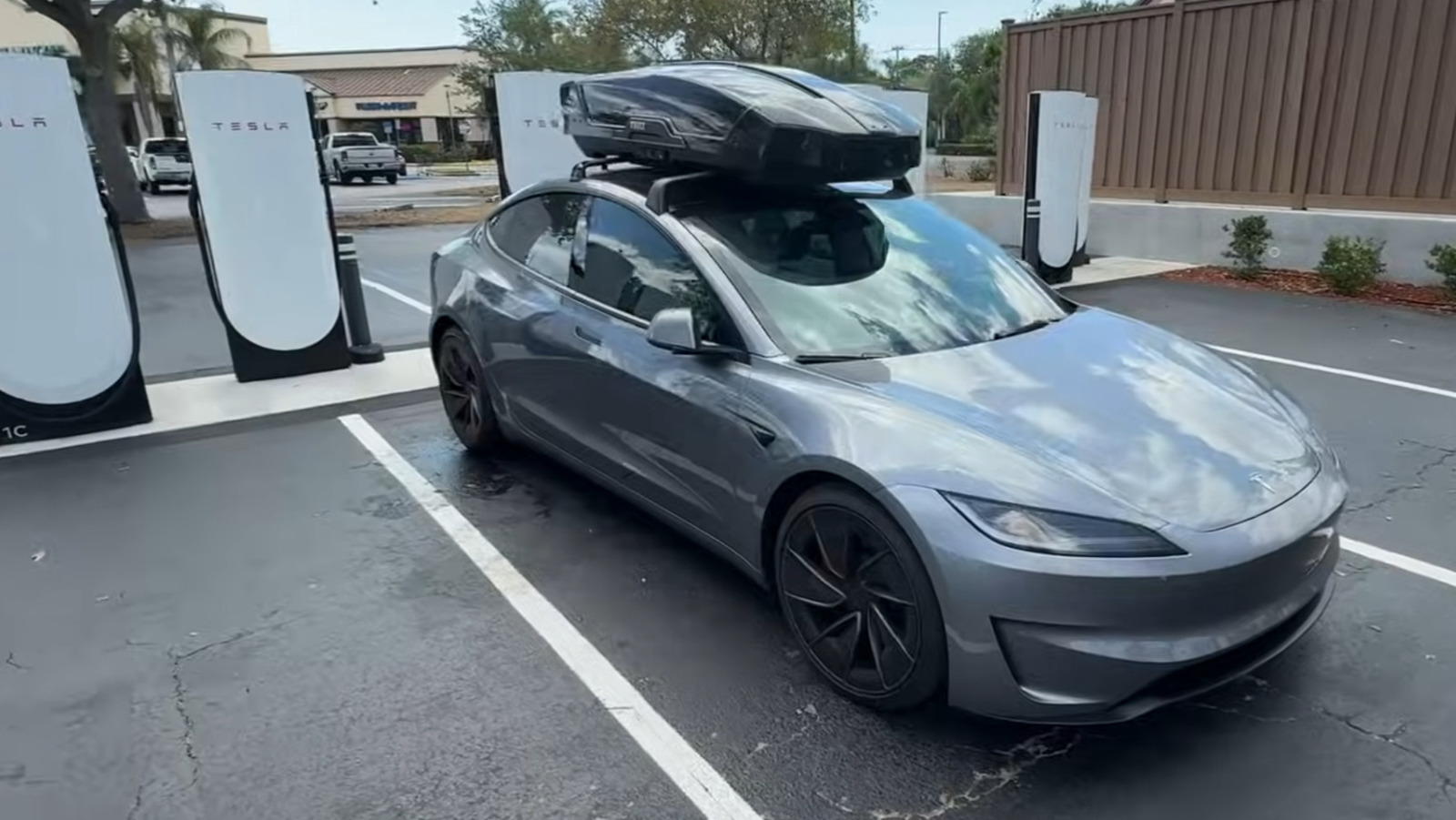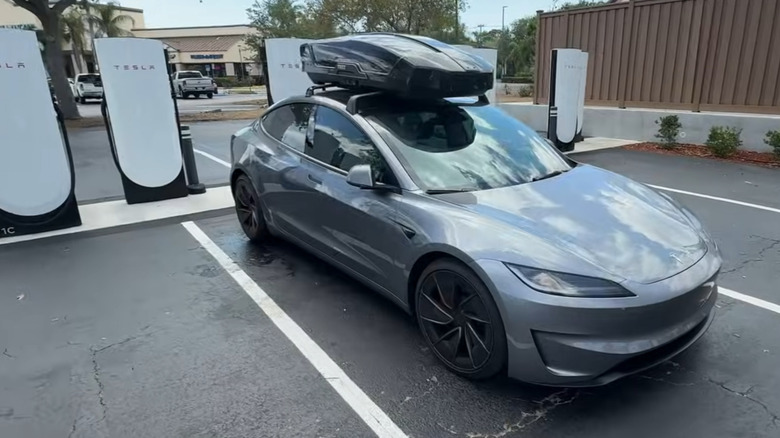Roof boxes are a convenient and easy way to add more cargo space to your car for a big family road trip or a long-distance move. If you aren’t regularly hauling a bunch of people and stuff for your daily commute, but you need to carry more a few times a year, these can be extremely helpful. They will also impact your car’s efficiency pretty substantially, so it probably isn’t wise to just leave your roof box (or roof top tent, ladder rack, bike rack, etc.) on your car all the time. Even having a roof rack on your car without any accessories on it can have an impact on your efficiency and range, regardless of whether your vehicle is powered by electrons, diesel, or gasoline.
For the layperson, the science of aerodynamics is still something of a mysterious dark art. Air is everywhere around us, invisible but acting as a force on everything, including as an impedance for your car’s forward progress. How aerodynamic your car is affects its ability to move cleanly through the air with speed and efficiency, and the car’s size and shape has everything to do with how that measurement.
The car’s coefficient of drag is affected by its shape, but that’s just one piece of the puzzle. For extremely good efficiency a car with a good coefficient of drag–like the Tesla Model 3 pictured above with a cD of 0.23–also needs a slim frontal area. The frontal area is the total square footage of the face of the car, where air would hit it.
How bad is your efficiency with a roof box?
By sticking a roof box on top of your car, you’re affecting both the car’s coefficient of drag by disrupting the smooth shape that the car’s engineers developed, but you’re also adding a whole bunch of frontal area. Depending on the size and shape of the roof box you use, your car’s efficiency can be decreased by as much as 25%, while empty roof racks with no roof box will increase your car’s consumption by as much as 11% on their own.
For a bit of tangible real-world testing, the team from Out Of Spec recently did an efficiency test with their new Tesla Model 3 Performance with a Thule Motion XT Large roof box installed. For giggles they ran the same test with the box turned around backwards. And finally, they ended their day by repeating the same test without the roof box. At the end of the test they found that the Tesla consumed 305.7 watt hours per mile travelled with the roof box on, and 266.8 watt hours per mile travelled with the roof box off, but with roof rails still installed. The box alone cost 12.8% in efficiency!
Gas, EV, or anything else, what’s on your roof makes a difference
It’s difficult to say how much the roof rails alone cost this Model 3 in efficiency, because the variables of temperature, traffic, and weather can’t be accounted for in a hypothetical, but Tesla claims the vehicle is capable of using as little as 236 watt hours per mile. If that is true, the roof rack by itself caused some 11.6% drop in efficiency, while the box and rack combined cost over 22.9% more energy to push through the wind.
While these specific numbers might have been measured on an EV, the impact of something on the roof affects any vehicle, regardless of powertrain. When you aren’t using your roof box, make sure you take it off, because it’s costing you big time at the gas pump or the EV charging station.




